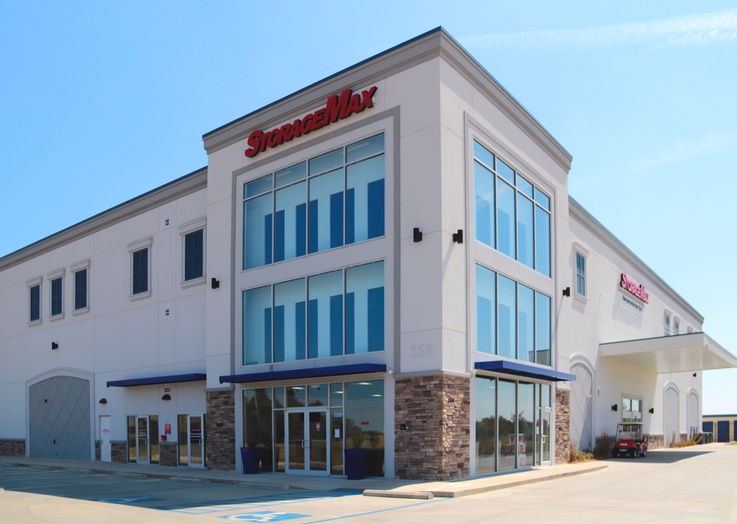Decelerating Performance
2018 To Bring Sustainable Growth Rates And Realistic Expectations
The perception of the self-storage industry by outside investors is vastly different than that of people in the industry. While outsiders are pessimistic, insiders are optimistic.
The best way to understand this is to look at the investment performance of the five publically-traded, self-storage real estate investment trusts. The index for the entire universe of equity REITs is called the FTSE Nareit All Equity REITs, and it was up 8.63 percent in 2016, about the same amount that the specific self-storage REIT category was in decline by -8.14 percent. Through the end of October 2017, the equity REITs as a whole were up just 6.18 percent, but that was still better than the category-specific self-storage REITs, which were still in negative territory, off -0.65 percent.
The problem with the self-storage industry is not that it isn’t performing well, because it is. The dilemma is one of comprehension.
Performance Reports
“The industry has performed so well for so long that we have set the level of expectation so high that it is just not sustainable,” says Aaron Swerdlin, vice chairman of Newmark Knight Frank in Houston. “The industry was priced to perfection, but fabulous year-over-year growth is unsustainable. An 11 percent or 10 percent or even nine percent growth rate was not going to happen forever. We have now retreated to something much more normal; as long as people expect a realistic level of performance, then they will be happy with self-storage.”
Indeed, the self-storage industry through the first half of this decade boasted some amazing revenue years. This was reflected in the self-storage REITs, which outperformed all the other REIT sectors and the general stock market as well. When the outstanding stopped, investors lost interest, even though the industry was still doing well. That was the story of 2017; by most predictions, that will be the story in 2018.
“2017 was a return to normality; it wasn’t the euphoric year as the previous three or four had been,” observes Todd Amsdell, president of the Cleveland-based Amsdell Companies. So, if revenue growth wasn’t double digits, for most mid-tier to large companies in the industry it was somewhere in the range of six percent to eight percent, which is nothing to sneeze at. However, the analyst community that follows the public REITs saw an industry that was getting eight percent and now is realizing four percent growth, and they were disappointed, which is expected, although the expectations were unrealistic. As Ken Nitzberg, president and CEO of Emeryville, Calif.-based Devon Self Storage, comments, “I don’t know of any industry that has had eight percent growth every year.”
“2017 was another solid year; if I have to guess, 2018 is going to look similar,” adds Shawn Hill, a principal with Chicago-based The BSC Group. But he does have one caveat: new construction. It was certainly something to consider as oodles of dollars were plowed into development, redevelopment, and expansion.
A record amount of capital had been lent on new development in 2017, notes Neal Gussis, a principal at CCM Commercial Mortgage LLC in Chicago. “More dollars were spent in 2017 than in the last big development cycle of 2005 to 2007. It’s staggering how much money is being spent on construction.”
According to numbers put together by the U.S. Census Bureau, self-storage construction spending in the last cycle peaked in 2005 at about $1.31 billion. That atmospheric level was breached in 2016 when construction dollars peaked at close to $1.914 billion. When 2017 numbers are tallied, self-storage construction spending should hit over $3 billion.
Although new development can negatively affect the industry, Gussis says most markets will be able to absorb the new supply.
“There will certainly be sub-markets that will see greater pricing and occupancy pressures than others,” Gussis notes. “I’m seeing more due diligence being performed prior to construction, lenders and owners being smarter, and more sophisticated operators building today. However, I do think the construction boom in 2017 will start declining in the coming years.”
A look at one of the better mid-tier players makes for a snapshot of the industry. Devon Self Storage operates 46 properties across numerous states, mostly in the Midwest and on the East Coast. Through the third quarter 2017, the company’s gross revenue was up about seven percent, which makes for a healthy year.
If you are in a market where adding new supply is at a minimum, you are still going to see six percent to eight percent revenue growth; if not, new supply will likely impact revenue.
“We are in a business that is very market specific, so some locations had another great year like we had for the last four or five and some places are more challenged with the addition of new properties that have opened,” says Nitzberg. “For many of these new properties, managers and owners have decided to compete on pricing in order to put bodies in the seats. As such, some markets have suffered a bit of a rate war, which is not necessarily all bad. It’s how the world works.”
For 2018, Devon Self Storage has budgeted for most of its locations a five percent to six percent revenue increase, down slightly from 2017. “For some of our stores, where no new product has been added and the market is full, we have budgeted a six percent to eight percent increase; but for stores where there has been any significant new product within a mile, we dropped that to two percent to three percent,” says Nitzberg.
Devon’s overall revenue projections for 2018 are likely to rise less than in 2017 and, as such, are right in line with most industry operators and brokers. The key word of 2018 is deceleration.
“We had seen some decelerating growth in almost every market in 2017, but it still was growth,” says Charles Byerly, president and CEO of US Storage Centers in Orange County, Calif. “Still, mid to high single-digit growth top line means almost double-digit growth to bottom line.”
As for 2018, Byerly expects more of the same: a continued deceleration. “Some of the more sophisticated guys will see growth in the mid-single digits, about five percent to six percent on a top line basis, and maybe that will roll through to mid to high single-digits net operating income,” he says. “Certainly, the trend line will be deceleration although it is not going to be so bad it will drag into negative territory.”
One of the difficulties in guessing how the self-storage sector will be perform industrywide is that, as dominant as the public REITs are, with about 6,000 stores under ownership, that’s still a small percentage of the whole industry. Private companies proliferate, and reporting is capricious at best.
“A lot of private operators don’t look at the year-over-year growth in a normalized way; they just look at what revenues were last year, compare it all to the current year, and report 12 percent or 15 percent growth,” Swerdlin explains. “What they are not considering is that 15 percent or 20 percent of their portfolios were properties still in lease-up, so of course revenues would look good. If you stripped out their core stabilized portion of their portfolio, true organic revenue growth for the industry was 4.5 percent to six percent in 2017, which is still better than any other product type out there.”
It’s important for investors to understand, self-storage is still one of the best performing industries; it is just not the best by 20 percent anymore. Stock price performance has been turbulent with regard to self-storage, because the market has priced operations to perfection at the same time that revenue began to decelerate. Institutional investors look at their analytical models and see deceleration of growth rates; they then carry that forward, and when they get to potential negative revenue growth within a couple of standard deviations, they either hold or sell but do not buy more.
“It’s ridiculous to punish an industry when you are still the number one performer; you are just not being the number one performer by huge margins,” says Swerdlin. “Growth at 4.5 percent to six percent is sustainable in 2018, so next year will look like this year. The real positive is a reset in expectations. Now everyone is paying closer attention. 2017 was not the worst, and people are going into 2018 with the most realistic set of expectations for the industry than any time in the last five years.”
2018 won’t be a bad year; it might even be a little “more normal” than 2017, and that is just a result of where the industry is in the cycle. Nevertheless, Amsdell is projecting a more challenging year with revenue growing less dramatically and expenses on the rise as local governments with real estate tax mechanisms are playing catch-up.
Byerly concurs. “Revenues for 2018 are healthy but decelerating. Expenses had been flat in 2017, but we do not anticipate it holding. Payroll expenses will rise depending on minimum wage laws, and municipalities are continuing to look for cash, which means the property tax side the industry will incur some headwinds.”
Transaction Market
During the summer of 2016, the transaction market slacked off. While the market was expected to turn around in 2017, the year started slowly. Then March blew in and the buyers came back like lions. In the end, the industry for 2017 performed better than expected, says Swerdlin. Volume for 2017 was about the same as for 2016, and expectations are for a similar performance in 2018.
This activity happened despite the REITs slowing down their acquisition spree of just a few years before.
The reason for the uptick of activity, says Steve Mellon, lead of JJL’s Self Storage Team in Houston, can be attributed to two factors: Sellers’ expectations are more in alignment with the market, and buyers have fresh equity that need to be placed.
“We finally saw all that capital that everyone was talking about for years find its way into the industry,” says Swerdlin. “With the REITs becoming more selective on where these companies spend capital, that opened up the market for new money.”
A lot of mid-tier players took advantage of the new equity coming to the self-storage industry. The Amsdell Companies, for example, had been buying a property or more a month in 2017. Amsdell doesn’t expect his firm will keep that pace in 2018.
“We are projecting to purchase fewer properties in 2018 versus 2017,” he explains. “In 2017, we were able to purchase more than our goal of one a month, but we feel 2018 will be more challenging and thus a return to a goal of one a month. The problem is there are less Class-A properties for sale, and there are as many suitors as ever, so to get to where we want to be acquisition-wise, we will have to turn to new markets.”
In 2016, Byerly estimates his company did $180 million in deals. By the end 2017, those numbers slipped to $175 million. “Things slowed down because there weren’t enough good properties out there,” he says. “Also, cap rates did not compress even with the pullback of the REITs. Mostly, that was due to the massive entry of private money that took up the space left behind by the REITs; maybe that has pushed the aggressiveness factor up a little higher, and taking cash out has become a precedent.”
On the other hand, Mellon expects his company’s 2018 will be better than its 2017 as a number of deals are under LOI or under contract that will close in 2018.
“We expect a good first quarter in 2018,” says Mellon. “There’s more equity entering our sector every day, and that’s putting pressure on placing that equity.”
New Construction
“Our brokerage business had its best year,” says Gussis. “We did several construction deals, acquisitions, refinancings, and expansions. We did the gamut, but, in general, our construction loan pipeline was larger than we had in previous years.”
Sometimes, the different financing types were all in one deal. CM Commercial Mortgage refinanced a four-property portfolio, getting the borrower better terms than he had before. Basically, the borrower pulled some equity from three existing properties to develop a fourth property, and this was all done with the same lender. “It was a refi, cash-out, and construction loan all wrapped into one portfolio,” says Gussis.
The self-storage industry is in a construction cycle because acquisition prices are too high and projected returns are much better for ground-up development, Gussis continues. “There is an incentive for people to build, and there is incentive for lenders to lend until the time, or proof, that the world is changing.”
There are other reasons as well.
“Some developers are worried they missed the crazy building phase of 2016, but still want to develop untapped markets. To do that they need to have an established record of success,” says Mellon.
If, as an owner/operator, you want to raise new equity, then you have to show a full cycle for the last investment. For example, you’re XYZ Builder and erected properties three or four years ago utilizing existing equity but have yet to sell, then the cycle had not been completed. If a new group wants to invest with XYZ Builder, it will need a track record. In short, until you buy the land, build, lease up the facility (maybe), and then sell your property—a cradle to grave case study—it is harder to get equity.
“If you can show you made your prior equity partners an 18 percent to 20 percent return and supposedly you can do that for the new equity players, you will get funding for development because there is a lot of equity out there looking for good operators,” says Mellon.
How much new building is expected in 2018? Everyone has a different opinion.
“New construction will slow down,” says Hill. “That’s because, whether demographics prove out or not, there will be a propensity for lenders and equity players to want to see how new supply is being absorbed into the market before they continue to finance new building. We have had a lot of activity over the last three years, and the market is going to react differently to people coming to the table new with proposals.”
One research study reports 1,200 new stores will have been built in 2017, but another pundit suggests the number will be closer to 500. “We have a lot of smoke and nowhere near as much flame,” says Nitzberg. “Everyone is saying we are building so much new space it will turn out to kill the goose that has laid the golden eggs. A large percentage of proposed new sites are never going to get built.”
This isn’t to say some cities and some micro-markets won’t get overbuilt. That will only affect owners or operators in those select venues. If you have a store in North Charlotte, N.C., and developers are going whole hog in Orlando, Indianapolis, Chicago, Dallas, or even in South Charlotte, then that won’t affect your market. The national data points will change. However, down in North Charlotte, you can still expect better revenue for your operation in 2018.
Steve Bergsman is an author, journalist, and columnist. His stories have appeared in over 100 newspapers, magazines, newsletters, and wire services around the globe; and his most recent book is “The Death of Johnny Ace.”
More Content
Popular Posts
Recent Posts
When Germantown High School in Gluckstadt,...
It’s comforting to know that no matter how...
A very wise self-storage expert once said...
Senate Bill 709 (SB709) has many in the...
In January, self-storage industry veteran...
In April 1984, the first non-stop commercial...
Raise your hand if you’ve ever made plans,...
Everyone knows it: Investing in real estate...









